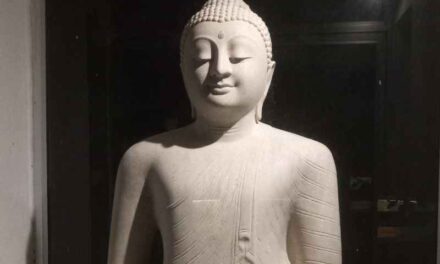Meditation is a central practice in Theravada Buddhism, the oldest surviving school of Buddhism. It is a means of cultivating mindfulness and insight, which are essential for achieving liberation from suffering and the attainment of Nirvana.
Types of Meditation in Theravada Buddhism
Theravada Buddhism recognizes a variety of meditation techniques, each with its own focus and benefits. Before engaging in formal meditation practice, certain preparatory practices are undertaken to make the mind more conducive to concentration.
Preparatory Practices
These practices, as described in the Noble Eightfold Path, help to cultivate a stable and clear mind1. They include:
- Right View: Understanding the basic principles of Buddhism, such as the Four Noble Truths and the law of karma.
- Sila (Morality): Adhering to ethical precepts, such as refraining from killing, stealing, and lying. This creates a foundation of wholesome actions that support mental purification.
- Sense Restraint: Controlling the response to sensual perceptions, not giving in to lust and aversion but simply noticing the objects of perception as they appear.
- Right Effort: Making an effort to prevent the arising of unwholesome mental states and to generate wholesome states. This includes cultivating mindfulness, concentration, and wisdom.
By following these preparatory steps, the mind becomes more settled and prepared for the practice of meditation.
Formal Meditation Practices
Once the mind is adequately prepared, one can engage in formal meditation practices. Some of the most common types include:
- Samatha-vipassana: This is the most common type of meditation in Theravada Buddhism, combining samatha (calm) and vipassana (insight) meditation. Samatha meditation aims to develop a calm and concentrated mind by focusing on a single object, such as the breath. Vipassana meditation involves observing the changing nature of the body and mind to gain insight into the three marks of existence: impermanence (anicca), suffering (dukkha), and non-self (anatta)2.
- Ānāpānasati: This is a type of mindfulness meditation that focuses on the breath. It is a simple yet powerful technique that can be used to develop concentration and awareness2.
- Mettā: This is a type of loving-kindness meditation that involves cultivating feelings of goodwill and compassion towards oneself and others. It is said to promote peace and harmony in the mind and in relationships. In the Theravada tradition, loving-kindness meditation is often practiced as part of the Four Protective Meditations (caturarakkha-bhavana)3.
- Kasiṇa: This is a type of meditation that involves focusing on a visual object, such as a colored disc. It is said to develop concentration and mental stability2.
- Four Protective Meditations: These meditations are aimed at overcoming the five hindrances to meditation: sensual desire, ill will, sloth and torpor, restlessness and worry, and doubt3. They include recollection of the Buddha’s qualities (buddhanussati), loving-kindness meditation (mettā), contemplation of the unattractive nature of the body (asubha), and recollection of death (marananussati).
- Cessation Attainment (nirodha samāpatti): This is an advanced meditative state described in the Pali Canon as a “cessation of feeling and perception.” 4 It is a temporary state of no consciousness that can be attained through deep meditative absorption. This state is said to have profound effects on subsequent cognition and experience.
The Five Mental Hindrances (pancha nivarana)
The five mental hindrances are obstacles that can prevent us from achieving a concentrated and clear mind in meditation3. They are:
- Sensual desire: Craving for pleasurable sensory experiences.
- Ill will: Feelings of anger, aversion, or resentment.
- Sloth and torpor: Mental dullness, laziness, and lack of energy.
- Restlessness and worry: An unsettled mind, anxiety, and inability to calm the mind.
- Doubt: Skepticism and uncertainty about the practice of meditation or the teachings of the Buddha.
Theravada Buddhism provides various techniques for overcoming these hindrances, such as mindfulness of the breath, loving-kindness meditation, and contemplation of the unattractive nature of the body.
Mindfulness in Theravada Buddhism
Mindfulness (sati) is the ability to be aware of the present moment without judgment. It is a key quality to be cultivated in Theravada Buddhist meditation. By being mindful, we can observe our thoughts, feelings, and sensations without getting carried away by them. This allows us to see the true nature of reality and to develop wisdom5.
Mindfulness in Buddhism goes beyond mere stress relief and offers a path toward spiritual enlightenment6. It is a practice that is deeply intertwined with ethical conduct and wisdom. The Buddha himself emphasized the importance of mindfulness in the Satipatthana Sutta, which outlines the Four Foundations of Mindfulness:
- Mindfulness of the body: Paying attention to the body, including the breath, posture, and physical sensations.
- Mindfulness of feelings: Being aware of pleasant, unpleasant, and neutral feelings as they arise.
- Mindfulness of the mind: Observing the thoughts and mental states that arise in the mind.
- Mindfulness of phenomena: Being aware of the different objects of consciousness, such as thoughts, feelings, and perceptions.
By cultivating mindfulness in these four areas, we can develop a deeper understanding of ourselves and the world around us.
The Role of Insight in Theravada Buddhist Meditation
Insight (vipassana) is the ability to see things as they really are. It is the direct antidote to ignorance, which is the root cause of suffering. Through insight meditation, we can gain a deeper understanding of the three marks of existence and the Four Noble Truths. This understanding leads to liberation from suffering and the attainment of Nirvana7.
Emptiness (sunyata)
The concept of emptiness (sunyata) is also important in Theravada Buddhism8. While it is often associated with Mahayana Buddhism, Theravada texts also emphasize the insubstantial nature of all phenomena. This understanding of emptiness is not the goal of Theravada practice but a means to liberation. By recognizing that all things are impermanent, unsatisfactory, and without a self, we can let go of our attachments and achieve true freedom.
Dependent Origination (pratītyasamutpāda)
Dependent origination (pratītyasamutpāda) is the principle that all phenomena arise due to causes and conditions5. This principle is central to Buddhist thought and is also relevant to the practice of meditation. By understanding dependent origination, we can see how our thoughts, feelings, and actions are interconnected and how they contribute to our experience of suffering. This understanding can deepen our insight into the nature of reality and help us to make wiser choices.
Stages of Insight (vipassana-ñanas)
The practice of insight meditation can lead to the arising of ten insight knowledges (vipassana-ñanas)9. These are progressive stages of understanding that culminate in the realization of Nirvana. They include:
- Knowledge of rise and fall: Seeing the impermanent nature of all phenomena.
- Knowledge of dissolution: Experiencing the dissolution of phenomena.
- Knowledge of fearfulness: Recognizing the unsatisfactory nature of all conditioned things.
- Knowledge of danger: Seeing the dangers of clinging to impermanent things.
- Knowledge of dispassion: Developing a sense of detachment from conditioned things.
- Knowledge of desire for deliverance: Longing for liberation from suffering.
- Knowledge of reflection: Contemplating the path to liberation.
- Knowledge of equanimity about formations: Developing equanimity towards all conditioned things.
- Adaptation knowledge: Gaining a deeper understanding of the nature of reality.
- Knowledge of conformity: Fully realizing the truth of the Four Noble Truths.
Benefits of Meditation in Theravada Buddhism
Meditation in Theravada Buddhism offers numerous benefits, both for the individual and for society as a whole. Some of the key benefits include:
- Reduced stress and anxiety: Meditation has been shown to be effective in reducing stress and anxiety. It helps to calm the mind and body, and to promote relaxation10.
- Improved mental health: Meditation can help to improve mental health by reducing symptoms of depression, anxiety, and other mental health conditions. It can also help to promote emotional balance and resilience10.
- Increased focus and concentration: Meditation can help to improve focus and concentration. It trains the mind to be more attentive and to resist distractions6.
- Enhanced self-awareness: Meditation can help to enhance self-awareness. It allows us to observe our thoughts, feelings, and sensations without judgment, which can lead to a deeper understanding of ourselves11.
- Greater compassion and empathy: Meditation can help to cultivate greater compassion and empathy. It allows us to connect with our own suffering and the suffering of others, which can lead to a more compassionate and caring attitude10.
- Improved physical health: Meditation has been shown to have a number of physical health benefits, such as reducing blood pressure, improving sleep, and boosting the immune system11.
- Cultivating Relaxed Alertness: It is important to note that meditation in Theravada Buddhism is not just about relaxation12. It is about cultivating a state of relaxed alertness, where the mind is both calm and focused. This state of mind is essential for developing mindfulness and insight.
- Spiritual growth and development: Meditation is an essential practice for spiritual growth and development. It can help to deepen our understanding of the Buddha’s teachings and to cultivate wisdom and compassion11.
Challenges of Meditation in Theravada Buddhism
While meditation offers numerous benefits, it can also be challenging12. Some of the challenges that meditators may face include:
- Distractions: It can be difficult to maintain focus during meditation, especially when we are first starting out. Our minds may wander, and we may be distracted by thoughts, feelings, and sensations13.
- Boredom: Meditation can sometimes be boring, especially if we are not used to sitting still for extended periods of time13.
- Physical discomfort: Some people may experience physical discomfort during meditation, such as back pain or leg cramps14.
- Emotional difficulties: Meditation can sometimes bring up difficult emotions, such as sadness, anger, or fear12.
- Doubt: We may have doubts about our ability to meditate or about the benefits of meditation13.
- Nonlinear Progress: The course of meditative progress is not always linear12. There may be periods of intense effort followed by periods of ease, and we may experience setbacks along the way. It is important to be patient with ourselves and to remember that meditation is a practice that requires ongoing dedication.
These challenges are not new, however. In fact, they have been present since the time of the Buddha13. The five hindrances to meditation, discussed earlier, are still relevant today, and Theravada Buddhism offers various techniques for overcoming them.
Historical Development of Meditation in Theravada Buddhism
The practice of meditation has been an integral part of Buddhism since its inception. The Buddha himself attained enlightenment through meditation. The earliest Buddhist texts, such as the Pali Canon, contain detailed instructions on various meditation techniques5.
The historical development of Buddhist meditation was likely influenced by pre-Buddhist Indian traditions, such as Jainism and Brahmanism5. These traditions had their own meditative practices, which may have contributed to the techniques and goals of Buddhist meditation.
Over time, different schools of Buddhism developed their own unique approaches to meditation. Theravada Buddhism emphasizes the practice of samatha-vipassana, which combines calm and insight meditation. This approach is based on the teachings of the Buddha as recorded in the Pali Canon5.
Early Schools of Theravada Buddhism
In Sri Lanka, where Theravada Buddhism first flourished, there were three main subdivisions of the tradition: the Mahāvihāra, Abhayagiri vihāra, and Jetavana15. These schools had slightly different interpretations of the Buddha’s teachings and practices, but they all shared a common emphasis on meditation as a central path to liberation.
Cultural Context of Meditation in Theravada Buddhism
Theravada Buddhism is the dominant form of Buddhism in Southeast Asia, including countries such as Sri Lanka, Thailand, Myanmar, and Cambodia. Meditation is deeply embedded in the cultures of these countries. Many people practice meditation daily, and there are numerous meditation centers and monasteries where people can learn and practice16.
The cultural context of meditation in Theravada Buddhism is also influenced by the monastic tradition. Monks and nuns play a central role in preserving and transmitting the Buddha’s teachings, and they are often seen as role models for lay practitioners16.
The “New Burmese Method”
In the 20th century, a new approach to meditation emerged in Burma known as the “New Burmese Method” or “Vipassana School.” 16 This approach, developed by teachers such as Mingun Sayadaw, U Narada, and Mahasi Sayadaw, emphasized the practice of vipassana (insight) meditation as the primary path to liberation. This method has become very influential in both Burma and the West.
Relationship Between Meditation and Other Aspects of Theravada Buddhism
Meditation is closely intertwined with other aspects of Theravada Buddhism, such as ethics and wisdom. Ethical conduct is seen as a foundation for meditation practice. By living ethically, we create a more conducive environment for cultivating mindfulness and insight17.
The importance of ethical conduct is highlighted in the threefold tenet of Buddhism, which emphasizes eschewing evil, cultivating good deeds, and purifying one’s mind18. This tenet underscores the importance of morality and responsibility in the Buddhist path.
The five precepts, which are basic ethical guidelines for Buddhists, are also essential for supporting meditation practice14. These precepts encourage us to refrain from actions that cause harm to ourselves and others, creating a foundation of wholesome karma that supports mental purification.
Wisdom is the ultimate goal of Theravada Buddhist practice. It is the ability to see things as they really are, which leads to liberation from suffering. Meditation is a means of developing wisdom by cultivating mindfulness and insight19.
Wisdom in Buddhism transcends mere knowledge19. It is a deep understanding of the nature of reality that arises from direct experience and contemplation. Through meditation, we can cultivate this kind of wisdom and move towards the ultimate goal of enlightenment.
Resources for Studying Meditation in Theravada Buddhism
For those interested in learning more about meditation in Theravada Buddhism, there are numerous resources available. Some of the key books on this topic include:
- “In the Buddha’s Words: An Anthology of Discourses from the Pali Canon” by Bhikkhu Bodhi 20
- “Mindfulness in Plain English” by Bhante Henepola Gunaratana 20
- “The Dhammapada” (anonymous) 21
- “The Middle Length Discourses of the Buddha: A Translation of the Majjhima Nikaya” by Bhikkhu Bodhi 21
- “Seeking the Heart of Wisdom: The Path of Insight Meditation” by Joseph Goldstein and Jack Kornfield 22
- “Practicing the Jhanas: Traditional Concentration Meditation as Presented by the Venerable Pa Auk Sayadaw” by Tina Rasmussen and Stephen Snyder 23
These books offer valuable insights into the theory and practice of meditation in Theravada Buddhism.
Meditation is a central practice in Theravada Buddhism, and it plays a vital role in cultivating mindfulness and insight. By practicing meditation, we can develop a deeper understanding of ourselves and the world around us, and we can move towards liberation from suffering and the attainment of Nirvana11. While meditation can be challenging, the benefits are well worth the effort10.
Further research could explore the specific effects of different meditation techniques on the brain and body, as well as the long-term benefits of sustained meditation practice. It would also be valuable to investigate the cultural variations in the practice of meditation within Theravada Buddhism and how these variations reflect different interpretations of the Buddha’s teachings.
Works cited
1. The Influence of Buddhist Meditation Traditions on the Autonomic System and Attention, accessed on February 5, 2025, https://pmc.ncbi.nlm.nih.gov/articles/PMC4471252/
2. Buddhist Meditation – – Theravada.gr, accessed on February 5, 2025, https://www.theravada.gr/en/about-buddhism/methods-of-buddhist-meditation/
3. Four Protective Meditations (caturarakkha bhavana) in Theravada …, accessed on February 5, 2025, https://drarisworld.wordpress.com/2018/12/01/four-protective-meditations-caturarakkha-bhavana-in-theravada-buddhism/
4. Cessations of consciousness in meditation: Advancing a scientific understanding of nirodha sam¯apatti, accessed on February 5, 2025, https://meditation.mgh.harvard.edu/files/Laukkonen_23_ProgressInBrainResearch.pdf
5. Buddhist meditation – Wikipedia, accessed on February 5, 2025, https://en.wikipedia.org/wiki/Buddhist_meditation
6. The Buddhist Approach to Mindfulness and Meditation – Insight Timer, accessed on February 5, 2025, https://insighttimer.com/blog/mindfulness-in-buddhism-secular-meditation/
7. The Jhanas in Theravada Buddhist Meditation – Access to Insight, accessed on February 5, 2025, https://www.accesstoinsight.org/lib/authors/gunaratana/wheel351.html
8. Emptiness in Theravada Buddhism – Insight Meditation Center, accessed on February 5, 2025, https://www.insightmeditationcenter.org/books-articles/emptiness-in-theravada-buddhism/
9. The Dynamics of Theravāda Insight Meditation – Barre Center for Buddhist Studies, accessed on February 5, 2025, https://www.buddhistinquiry.org/article/the-dynamics-of-theravada-insight-meditation/
10. A Complete Guide to Buddhist Meditation: Principles, Techniques …, accessed on February 5, 2025, https://www.verywellmind.com/buddhist-meditation-8619603
11. What are the Benefits of Buddhist Meditation? – Ratna Ling Retreat Center, accessed on February 5, 2025, https://ratnaling.org/what-are-the-benefits-of-buddhist-meditation/
12. Awakening is not a metaphor: the effects of Buddhist meditation practices on basic wakefulness – PubMed Central, accessed on February 5, 2025, https://pmc.ncbi.nlm.nih.gov/articles/PMC4054695/
13. Challenges to Buddhist meditation practice now – Secular Buddhist …, accessed on February 5, 2025, https://secularbuddhistnetwork.org/challenges-to-buddhist-meditation-practice-now/
14. Problems with Goenka courses – Meditation – Classical Theravada, accessed on February 5, 2025, https://classicaltheravada.org/t/problems-with-goenka-courses/719
15. History of Theravada Buddhism – Wikipedia, accessed on February 5, 2025, https://en.wikipedia.org/wiki/History_of_Theravada_Buddhism
16. American Theravada Buddhism in the 21st Century – Lion’s Roar, accessed on February 5, 2025, https://www.lionsroar.com/theravada-buddhism-america/
17. What are the practices of Theravada Buddhism? – Tricycle: The Buddhist Review, accessed on February 5, 2025, https://tricycle.org/beginners/buddhism/theravada-practices/
18. www.irjweb.com, accessed on February 5, 2025, https://www.irjweb.com/RELEVANCE%20OF%20THERAVADA%20BUDDHIST%20ETHICS.pdf
19. What is Wisdom, or Panna/Prajna? | Buddhism A–Z – Lion’s Roar, accessed on February 5, 2025, https://www.lionsroar.com/buddhism/wisdom/
20. Theravada – Buddhism: Books – Amazon.com, accessed on February 5, 2025, https://www.amazon.com/Theravada-Buddhism-Religion-Spirituality-Books/b?ie=UTF8&node=297526
21. Popular Theravada Buddhism Books – Goodreads, accessed on February 5, 2025, https://www.goodreads.com/shelf/show/theravada-buddhism
22. Browse Books: Religion / Buddhism / Theravada | RJ Julia Booksellers, accessed on February 5, 2025, https://www.rjjulia.com/browse/book/REL007040
23. Theravada Buddhism Books for Beginners: A Reader’s Guide, accessed on February 5, 2025, https://www.shambhala.com/theravada-buddhism-a-guide-for-readers/





